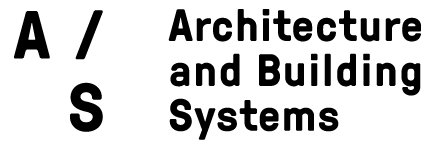Solar Simulator: The Sun is Shining at ETH Zurich!
(English below)
Mittagssonne auf Knopfdruck
Wir freuen uns mitteilen zu können, dass der LED-Sonnensimulator im Zero Carbon Building Systems (ZCBS) Labor seinen Betrieb aufgenommen hat.
Die künstliche Sonne besteht aus Hunderten von leistungsstarken Leuchtdioden und befindet sich in einer Kammer, in der das Klima gesteuert werden kann. Hier kann ein breites Spektrum an Bedingungen hinsichtlich Sonneneinstrahlung, Temperatur und Luftfeuchtigkeit eingestellt werden. In der Testzelle können neue Gebäudehüllen, neue Materialien sowie Komponenten der Gebäudetechnik für Heizung, Lüftung, Beleuchtung, Be- und Entfeuchtung für eine Vielzahl von Klimazonen getestet werden.
Im Obergeschoss des ZCBS Labors sind zwei Testzellen direkt dem Zürcher Klima ausgesetzt. Das Besondere an den beiden Testzellen ist, dass Aussenwände, Decken und Böden entfernt und mit Prototypen bestückt werden können. So können Bauteile schnell und in voller Grösse auf ihre Leistungsfähigkeit getestet und weiterentwickelt werden. In jedem Raum messen Sensoren Daten wie Luft- und Oberflächentemperatur, Luftfeuchtigkeit, Luftgeschwindigkeit, Sonneneinstrahlung und Wärmedurchgang.
Das ZCBS Labor ist ein wichtiger Meilenstein für dir Forschung des Instituts für Technologie in der Architektur (ITA) für das nachhaltige Bauen.
Wir danken Ihnen für Ihre Unterstützung und freuen uns auf die Zusammenarbeit.
Midday sun at the touch of a button
We are delighted to announce that the Zero Carbon Building Systems (ZCBS) lab's LED artificial sun is shining and moving!
The artificial sun is made up of hundreds of powerful light-emitting diodes and is housed in an artificial atmosphere chamber. A wide range of desired conditions can be created in terms of solar radiation, temperature and humidity. A test cell can be used to test new building envelopes, materials and building services components for heating, ventilation, lighting, humidification and dehumidification in different climates around the world.
On the upper floor of the ZCBS laboratory, two test cells are directly exposed to the Zurich climate. Their configuration allows for comparative tests, and their special feature is that their external walls, ceilings and floors can be removed and fitted with prototypes. In this way, building components can be immediately tested for performance in their original size and refined more quickly. In each room, sensors measure data such as air and surface temperatures, humidity, air velocity, solar radiation and heat transmission.
The opening of the ZCBS Lab marks a significant milestone of the Institute of Technology in Architecture and our group to advancing research and sustainable building practices.
We thank you for your continued support and look forward to collaborating with you in the future.
Project Credits
ETH Zurich Team: Prof. Dr. Arno Schlueter, Director; Dr. Illias Hischier, Research Lead; Marco Baur, LED Solar Simulator Lead, Facility Project Manager Phase 2; Gabriel Kreuzer Sanchez, Systems Integration; Erik de Best, Systems Integration; Dominique Maritz, Systems Integration; Moritz Begle, Facility Project Manager Phase 1
Industry Partners: Siemens, Wolf Klimatechnik, Sage Glass - Saint Gobain
Funding Support: ETH Zurich Foundation, Swiss National Science Foundation (SNSF)
Construction Partners: Aepli Metallbau AG, Alltec, Bertschinger Innenausbau AG, Brönnimann Hoch + Tiefbau AG, Burckhardt+Partner AG, Dr. Lüchinger + Meyer Bauingenieure AG, Eglin Elektro AG, Frei + Partner Metallbau AG, Future Electronics, Gifas Electric GmbH, Hälg & Co. AG, Heizmann AG, Jungenergie GmbH, Koster AG, Lyner Haustechnik AG, Marti Engineering, Meier + Co. AG, Müpa AG, Pamo Gerüste AG, Rena, Schmid AG, Schmidiger + Rosasco AG, Seoul Semiconductor, Siemens Schweiz AG, Vetschpartner Landschaftsarchitekten AG, Waldhauser + Hermann AG, Werner Stauffer AG, Wolf AG, EMCH + Berger, Senn Technology.
